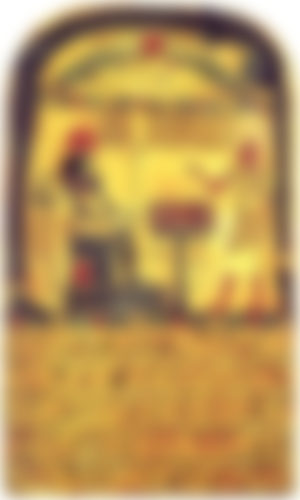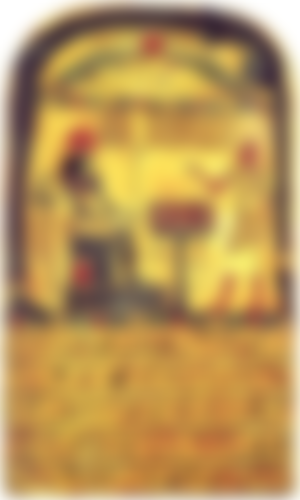Aleisteir Crowley (1875-1947) was an occultist, writer, painter, mountaineer, esotericist, magician, philosopher and, in a sense, religious founder. He was a very independent thinker and his thoughts and actions generate inspiration or give distaste, according to one's own liking and taste. Whatever one thinks of him and his work, he is a fascinating person, and one of the most influential Europeans of the 20th century. And no one can take away from him that he was probably one of the most educated people in existence. For a time he called himself "The Great Beast", "666", from the symbolism of the Bible's Book of Revelation, and he sometimes had a sinister appearance.
Going into his teachings and life in only one article would be impossible; I will not even try to do that. Nor do I want to moralize about his actions and opinions. For those who want to learn more about Crowley, there is plenty of literature in both libraries and online. In addition to that, his own writings are available (although not always easy to understand).
In this article, I want to focus on Aleisteir Crowley and Egypt. At first glance, one can wonder if Egypt had any place in the life of this Englishman; did he really have any connection to it?
Yes actually.
In 1903, Crowley married Rose Edith Kelly. In 1904, they travelled to Cairo, where they claimed to be a prince and his princess. According to his own statement, Crowley had received the title from an Eastern potentate, which may very well be true. In any case, Crowley decorated a room in Cairo as a temple, and began to invoke ancient Egyptian deities. Rose, by all accounts, began to show signs of medial ability, claiming to have contact with the god Horus. Rose also claimed that "the Equinox of the Gods has come". After that, Crowley also came to "hear a voice", which would be Aiwass, Horus' messenger. He wrote down what the voice said, and it became "The Book of the Law", a cornerstone of the religion that Crowley came to create, Thelema, which in turn would contain a lot of ancient Egyptian symbolism.
Crowley had found out who the message came from by taking Rose to the "Egyptian Museum" in Cairo, where she pointed out "the Stele of Ankh-ef-en-Khonsu", which, according to Crowley, had inventory number 666. It gave him associations to the book of Revelation's myth of the speech of the beast, and he called it "The Stele of Revealing".
If we are going to be picky, the story of the inventory number may not be completely true in the form in which it is told. The stele was first shown at the "Bulaq Museum" in Cairo, and had inventory number 666. It was moved in 1902 to the new "Egyptian Museum" at Tahrir Square, where it had (and still has) inventory number A 9422. There is also a temporary registration number associated with the stele, 25/12/24/11.
Rose and Aleister Crowley were in Cairo in 1904, and then the stele would no longer have had the number 666. But probably the old inventory number was also stated.

(The image above: The Stele of Revealing, about 780-770 BC. Image is in the Public Domain.)
The stele was originally made for the Montu priest Ankh-ef-en-Khonsu. It shows him offering sacrifice to "Re-Harakhty" (with falcon's head and sitting on a throne), "Re-Horus of the two horizons", which is a combination of the gods Re (Ra) and Horus. At the top is Nut, a celestial goddess, and just below her, the Winged Sun disk, Horus Behdety.
Crowley's own interpretation was that the stele depicted the three main deities of Thelema, his religion: Nuit (Nut), Hadit (Behdety) and Ra-Hoor-Khuit (Re-Horus of the two horizons).
The stele can still be seen at the "Egyptian Museum" [المتحف المصري (El-Matḥaf El-Masri)] at Tahrir Square in Cairo.
(This was originally written before they started to move objects to the new museum, Grand Egyptian Museum in Giza. At this moment, I am not sure where the stele is now.)
“The Book of the Law” is central in Crowley's teachings. Some people expressed doubts to his claims about the origin of the book; in “The Equinox of the Gods” (1936), he gave a comment to that:
"Certain very serious questions have arisen with regard to the method by which this Book was obtained. I do not refer to those doubts—real or pretended—which hostility engenders, for all such are dispelled by study of the text; no forger could have prepared so complex a set of numerical and literal puzzles[...]"
Copyright © 2017, 2021 Meleonymica/Mictorrani. All Rights Reserved.
Here you find my articles about Egyptology, and about History.
You find all my writings on Read.Cash, sorted by topic, here.
If you are interested in History and Egyptology, join my community History, Myths, Legends & Mysteries (be45).
